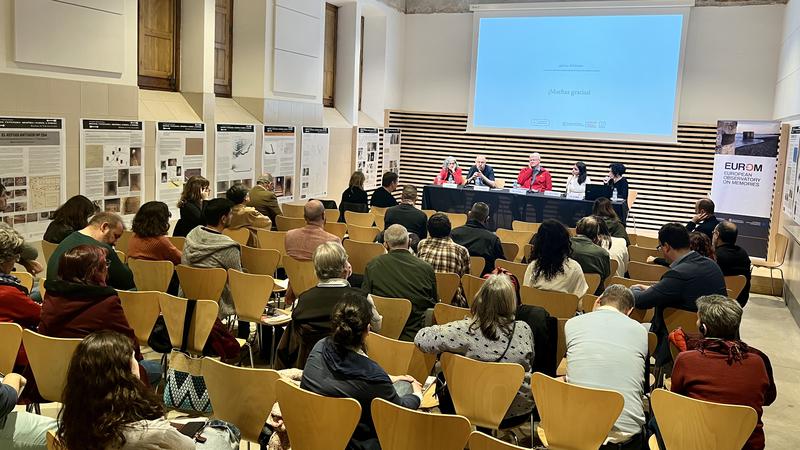Remembering Barcelona's past: wartime shelters or 'underground fortress'
Bunkers in city show context of chaos during construction

Going underground to investigate how life has changed in the past decades, and especially how life was at a time when Barcelona and other European cities were being bombed, is something that not many people have done.
But recently experts have been carrying out research into various bunkers across the city to see how citizens used shelters and to revive Europe's memory of its underground history.
"How many historical stories have disappeared because of fear?" archaeologist Carme Miró asked the audience during an international congress on the topic in Barcelona's La Model prison in mid-March.
"Fear is always there, and we have to take it into account," she said as she explained her work studying Barcelona's shelters dating back to the Spanish Civil War (1936-1939).
Some of these shelters are open to the public so people have the opportunity to learn about the city's underground past.
But Barcelona is not alone in this history, as some bomb shelter examples have also been preserved in Paris, Berlin, and other cities.
"Bunkers are something we see across Europe. For example, in Hamburg, there is a bunker museum, as it is important for our cultural memory to remember what our grandparents went through," Keith Lowe, a historian, told Catalan News.
In the German capital, while Adolf Hitler's bunker was destroyed and is currently a parking lot, there is a real-life scale reproduction of furniture he had in another site, Wieland Giebel, curator at Berlin Story Bunker, said during the congress in Barcelona.
While in the past, the shelter used to protect 12,000 people, although with a maximum legal capacity of 3,500, this bunker in the city center of Berlin currently hosts an exhibition and bookstore.
In Paris, experts have registered around 40,000 shelters, some of which are still available to visit, as Gilles Thomas, from Paris' city council underground team, explained in Barcelona.
These, built by workers and construction machines, "were different kinds of shelters, including gas-proof ones," Thomas said. The city even had around 30 underground hospitals to treat bomb, gas, or fire injuries. Citizens who did not go to purpose-built shelters had to descend to one of the 52 metro stations available as safe places to protect themselves.
Most of the bunkers were built in the gardens of Paris, such as the Luxembourg Gardens, known for hosting the French Senate.
The 'defénse passive' (passive or civil defense in English) saw many people squeezed into very small spaces, with four adults stood in a single square meter, facing each other. Up to six children were placed in each square meter.
What about now?
Currently, shelters in Barcelona are "invisible, and there are several difficulties in trying to find them as they are hidden," architect Ana Laura Bertero said during the congress.
This "underground fortress," as she called it, is part of the city's past, but in fact, the construction was "fast and amid chaos, as the first bombings in February 1937 was a moment of chaos," she said.
At the time, dozens of shelters were being built in Barcelona, and all of them followed a style, however because of the "differences, you cannot say that you have visited all the shelters once you visit one, as each shelter has its own history," Ana Laura Bertero said.
Years later, "it is time to talk about memory and history," Carme Miró said. "We cannot divide. We have to keep going forward."
"We do not need shelters now," Lowe told Catalan News. But "it is important that we remember, having a few at least for people to come and feel, not just know, but feel how it was like for people during Spanish Civil War, World War II," he said.
"Barcelona has been a pioneer in the study and the work of shelters, and we have to give voice to the silenced heritage," Carme Miró said, but "restoring does not mean turning into a museum."
A potential solution, now that technologies are part of everyone's day-to-day, is to "rebuild shelters in 3D, and to be very precise on which shelters are opened to the public or not," she concluded.
Discover more of underground Barcelona
What lies beneath the streets of Barcelona? Listen to our Filling the Sink podcast episode published in January 2022 to learn about the metro ghost stations, abandoned shopping arcades and massive water deposits the city hides from the eyes of those above ground.


